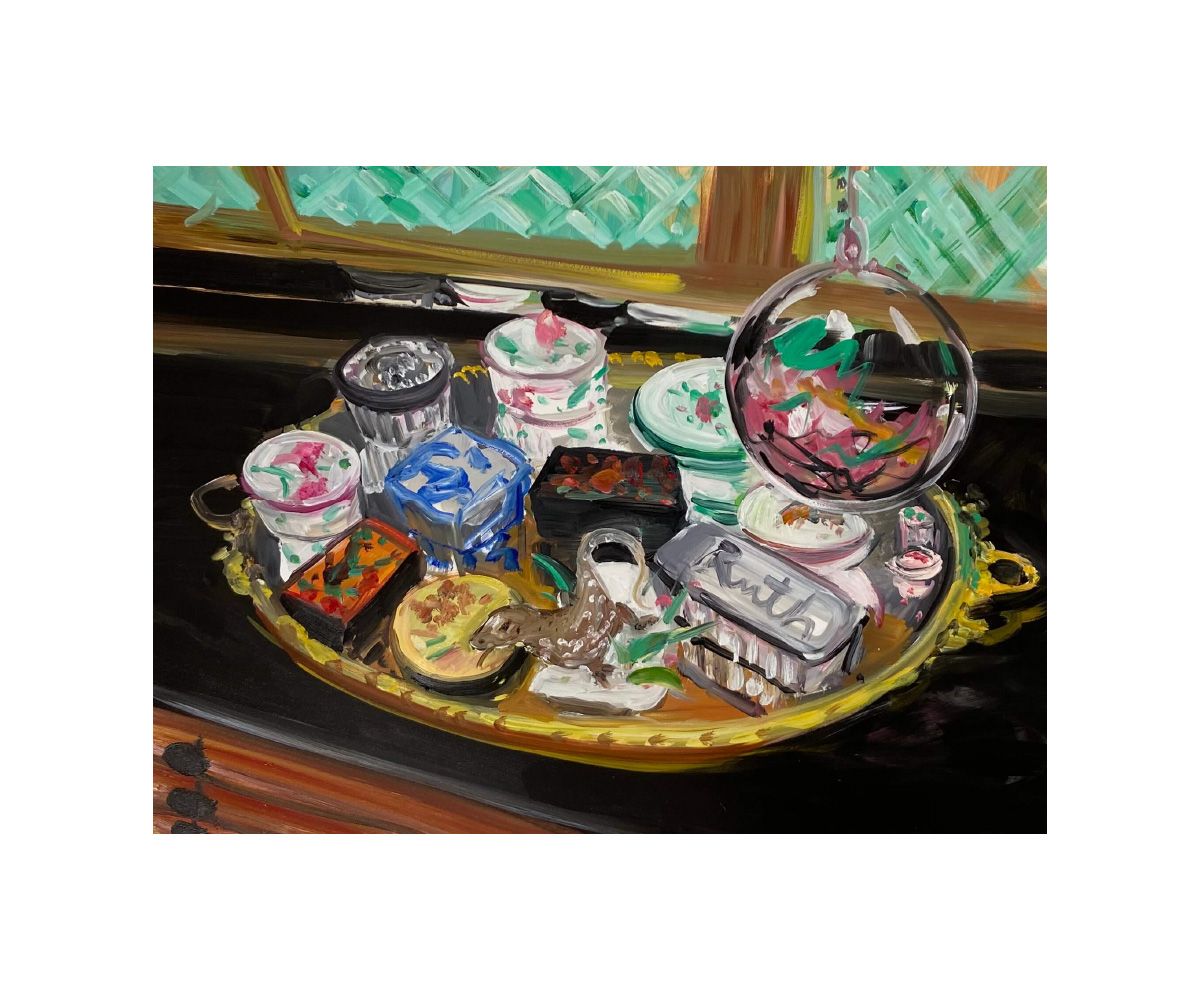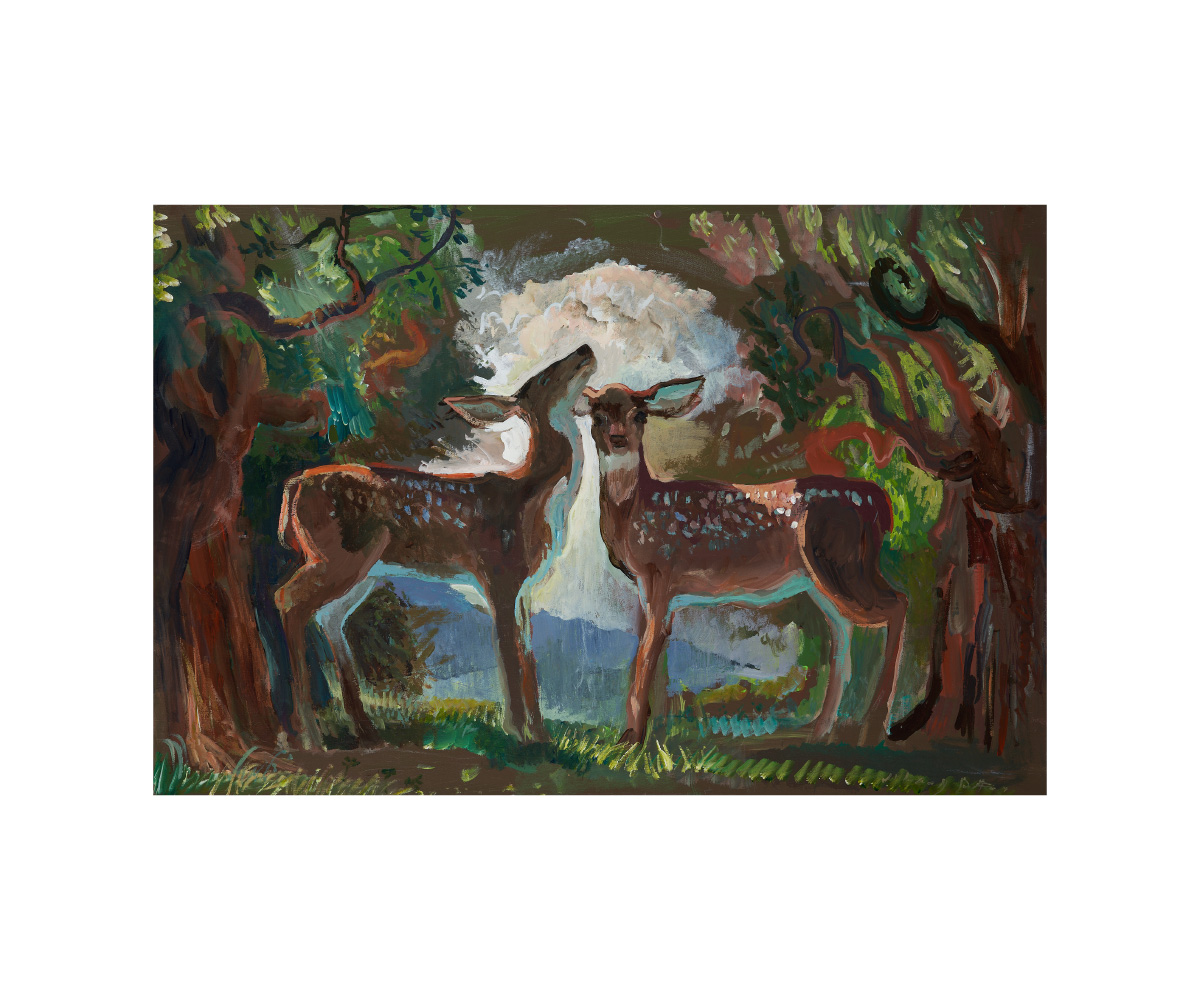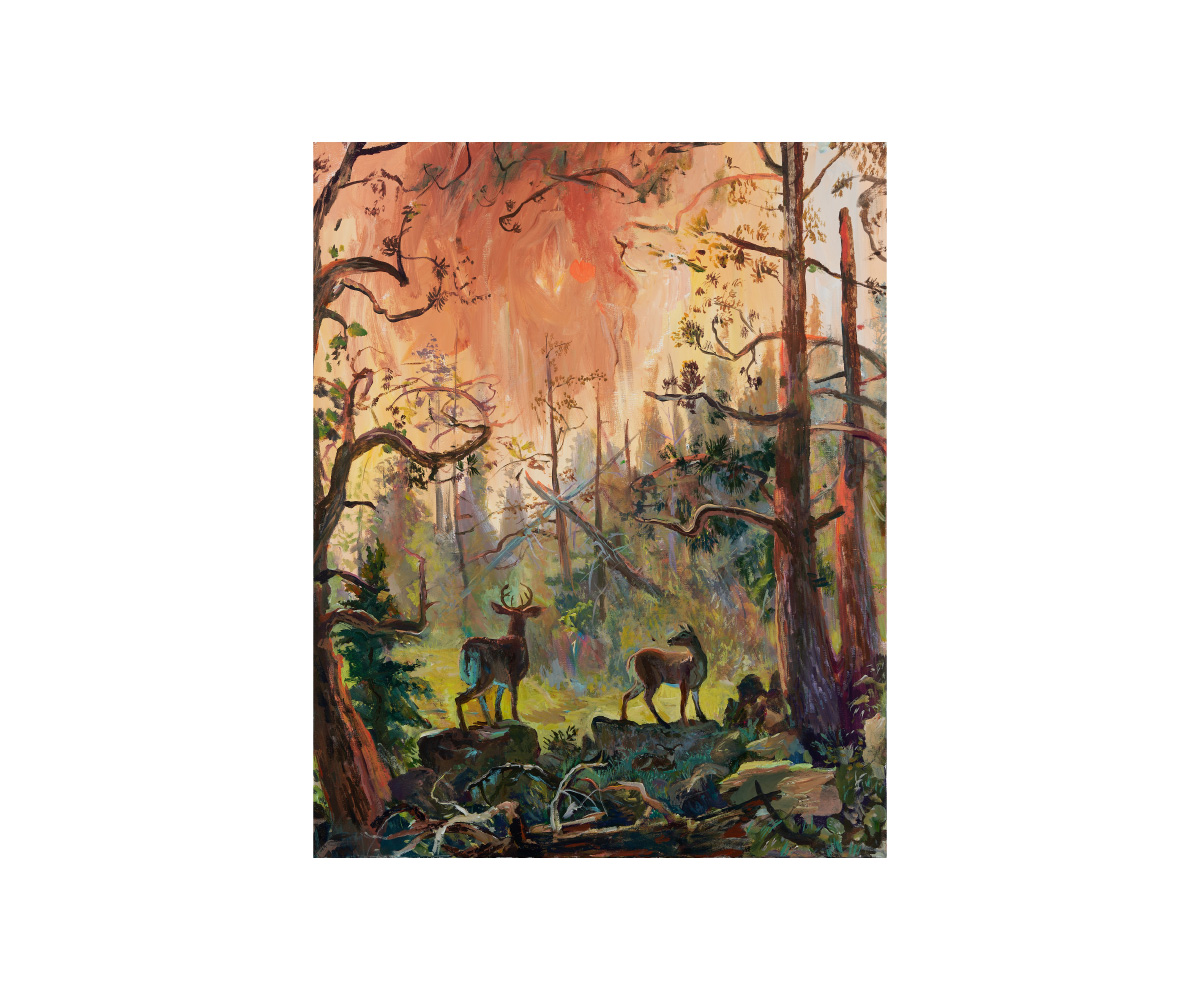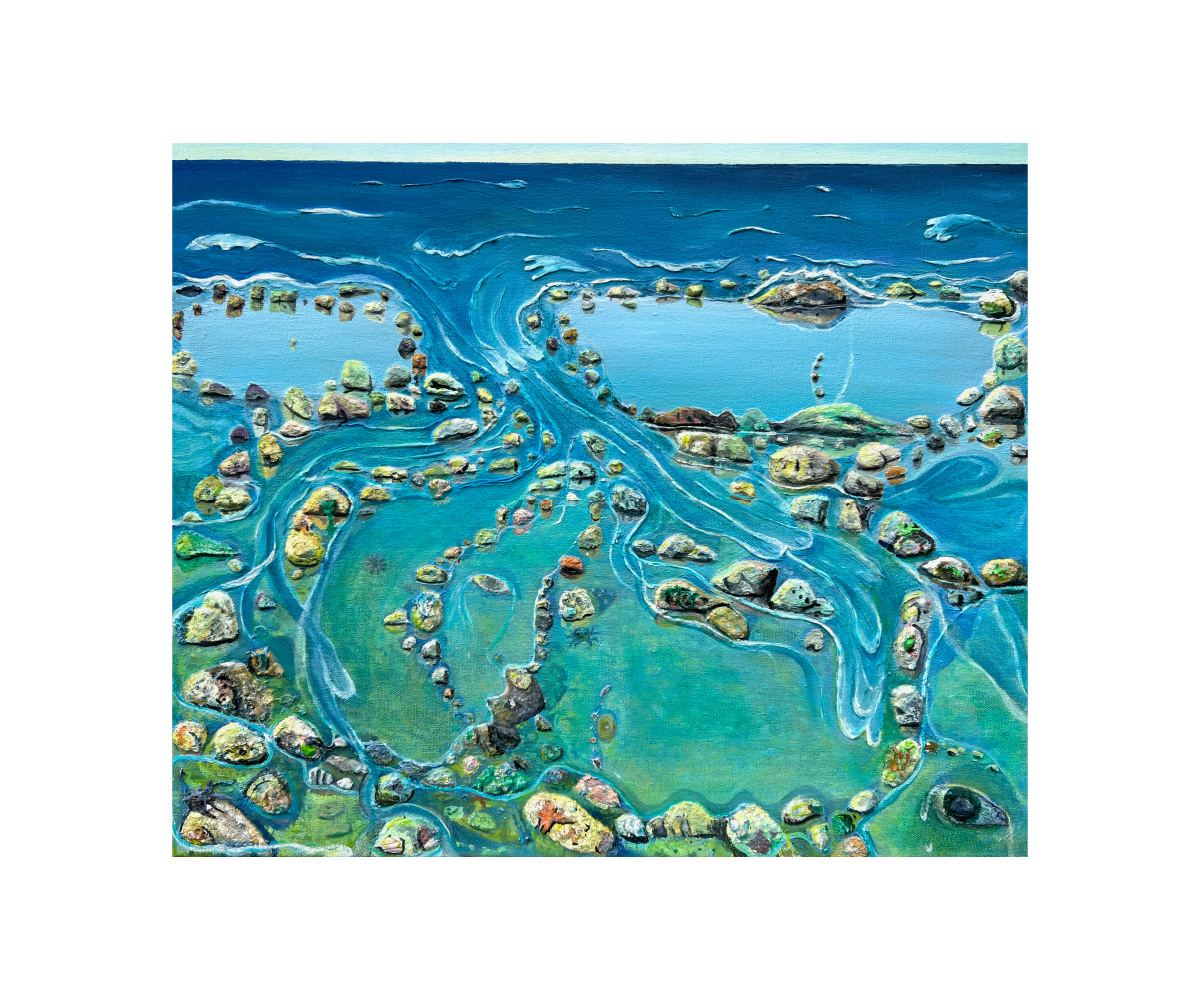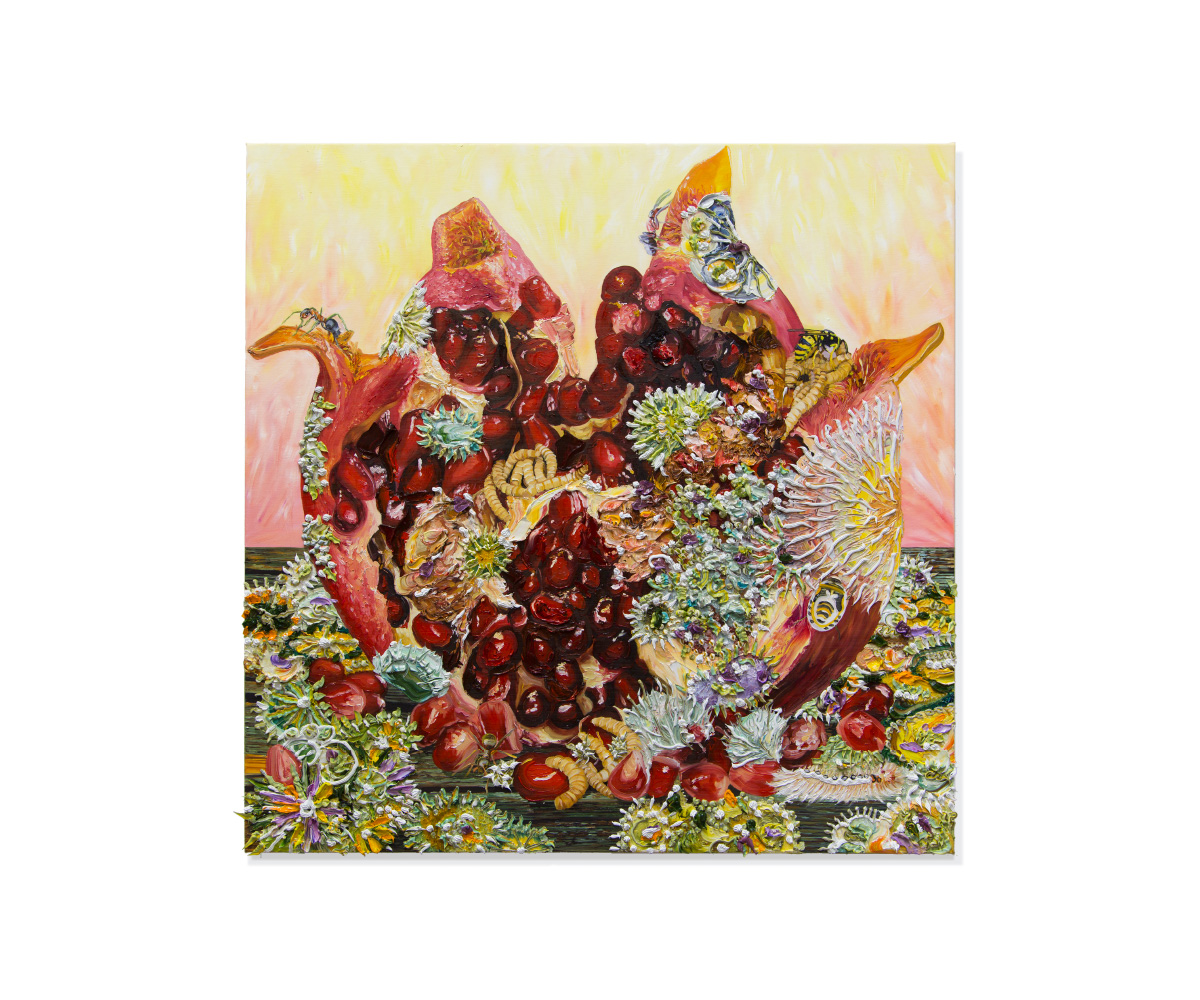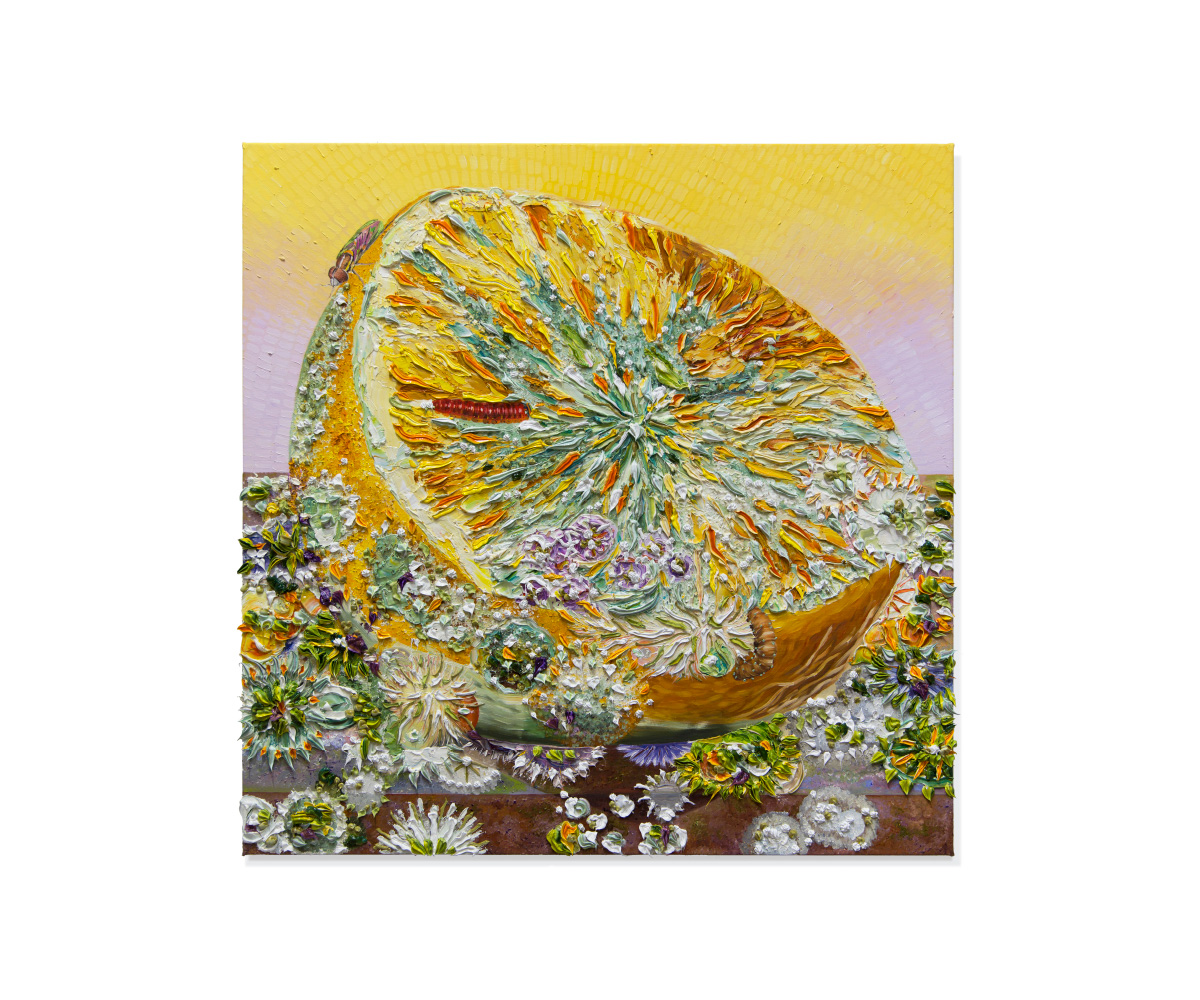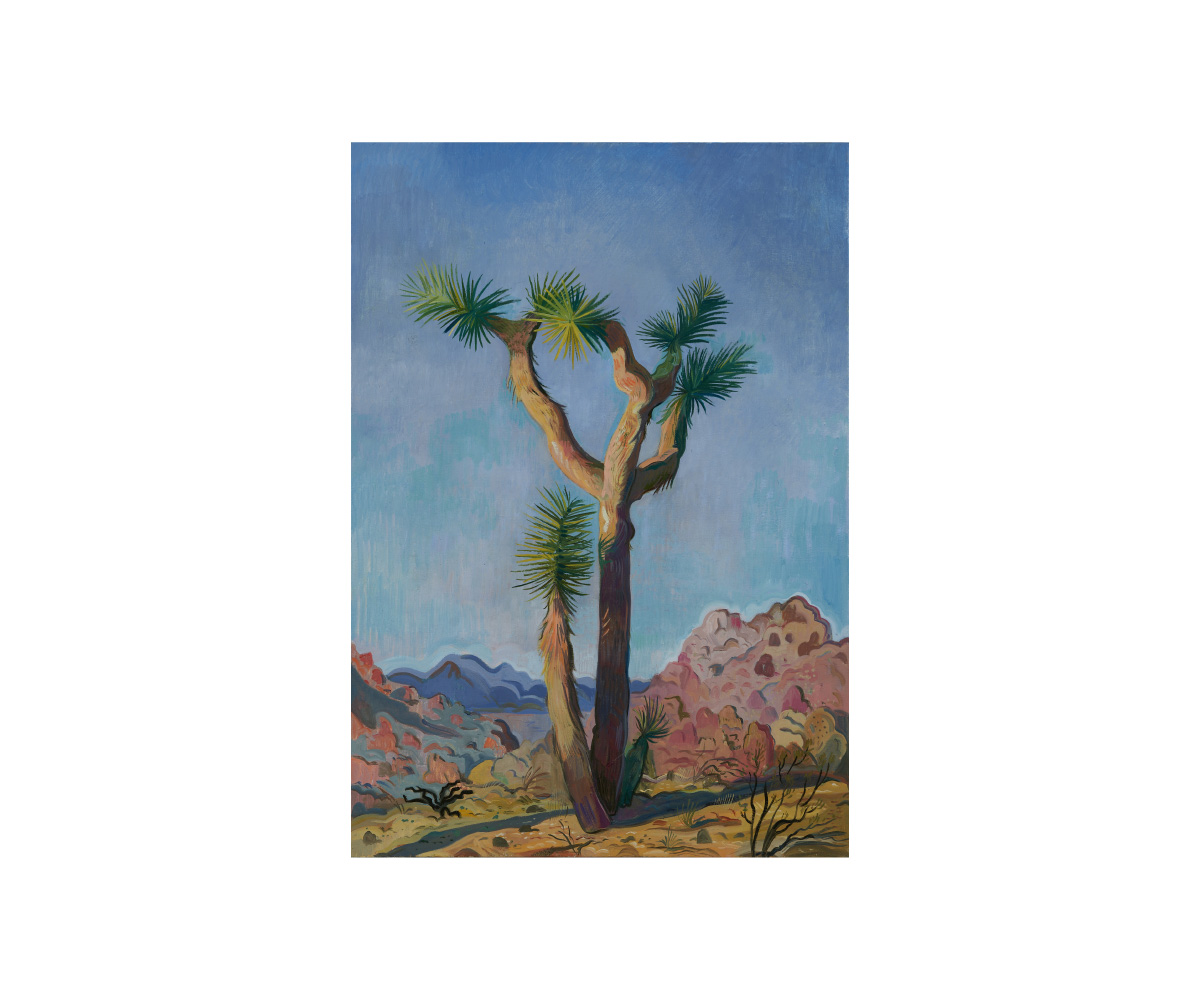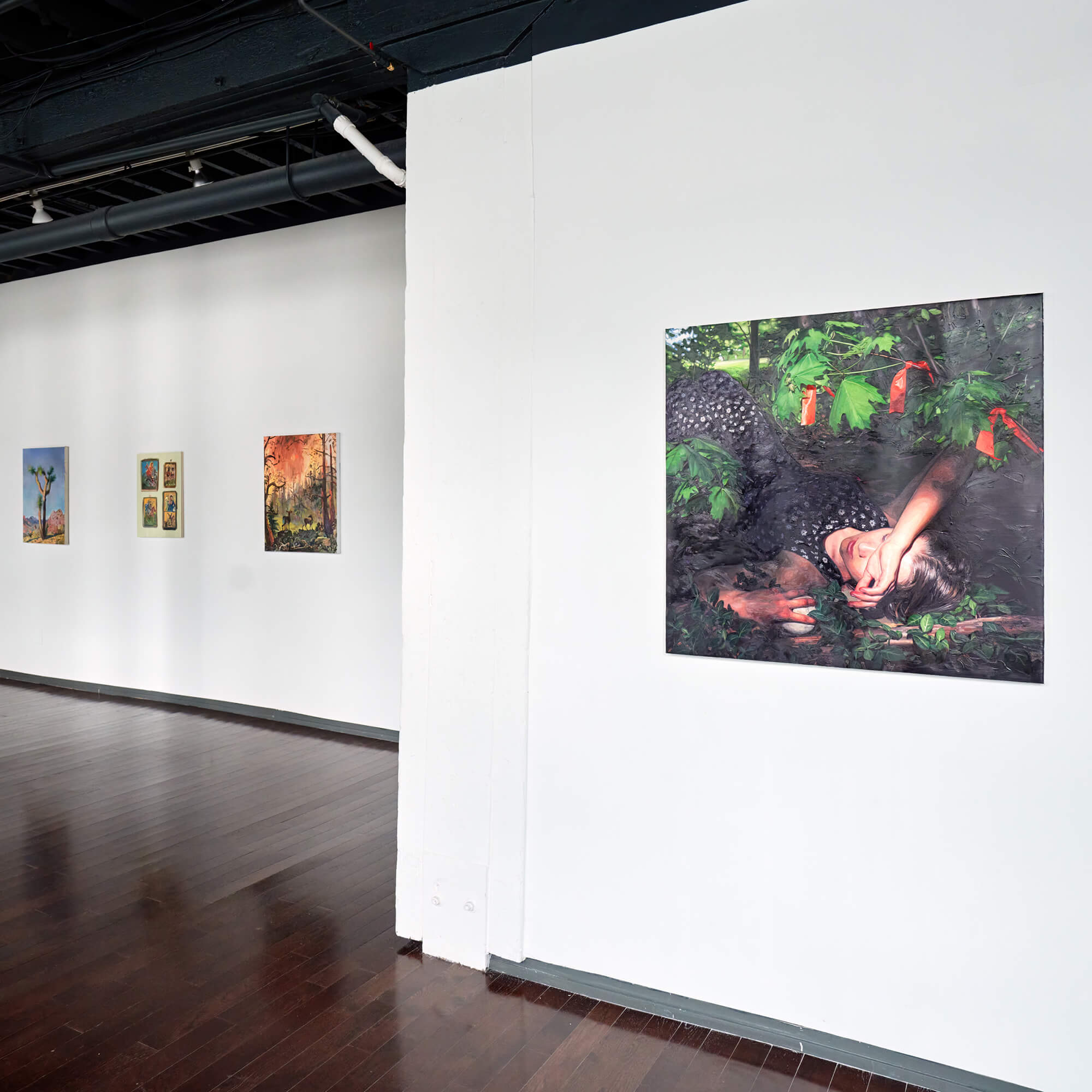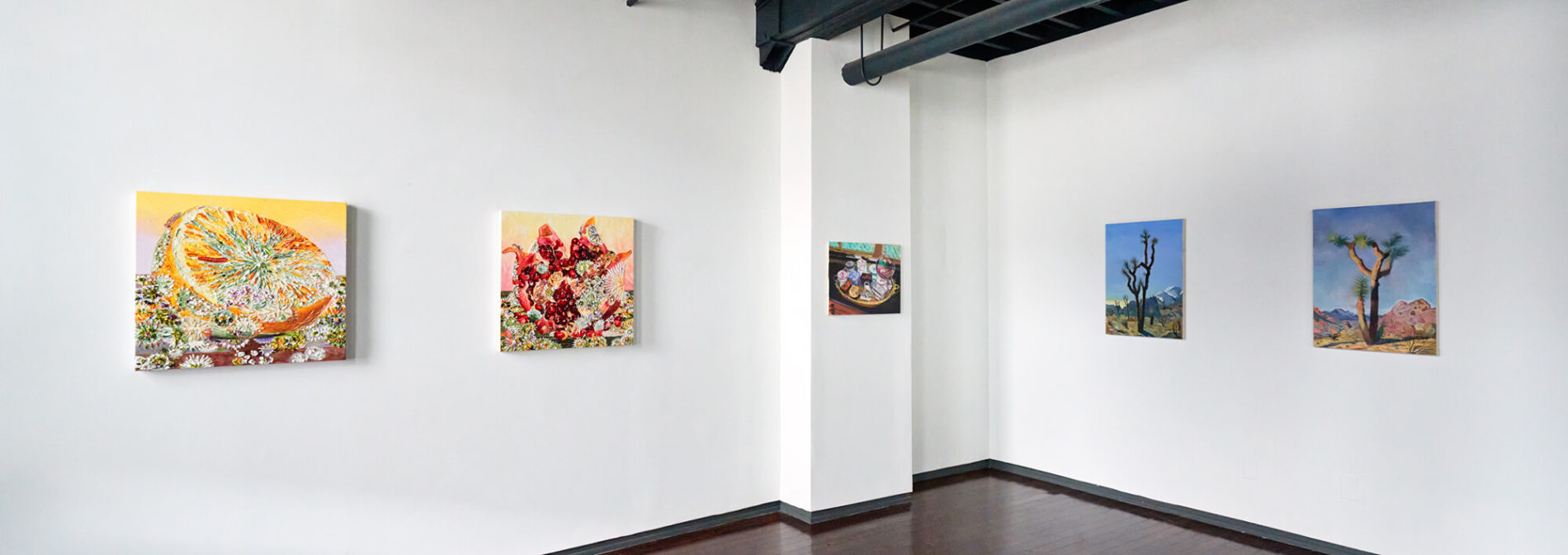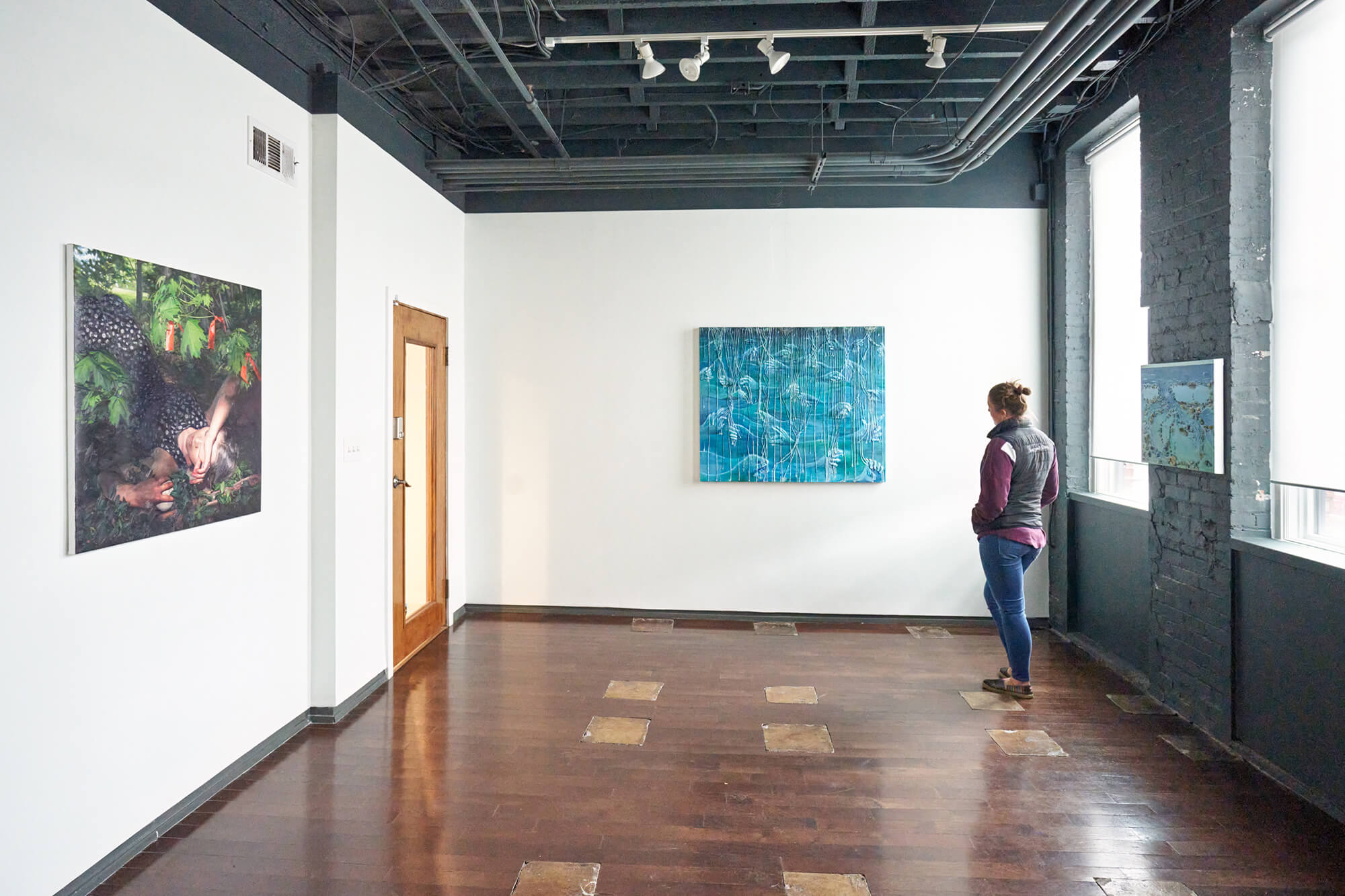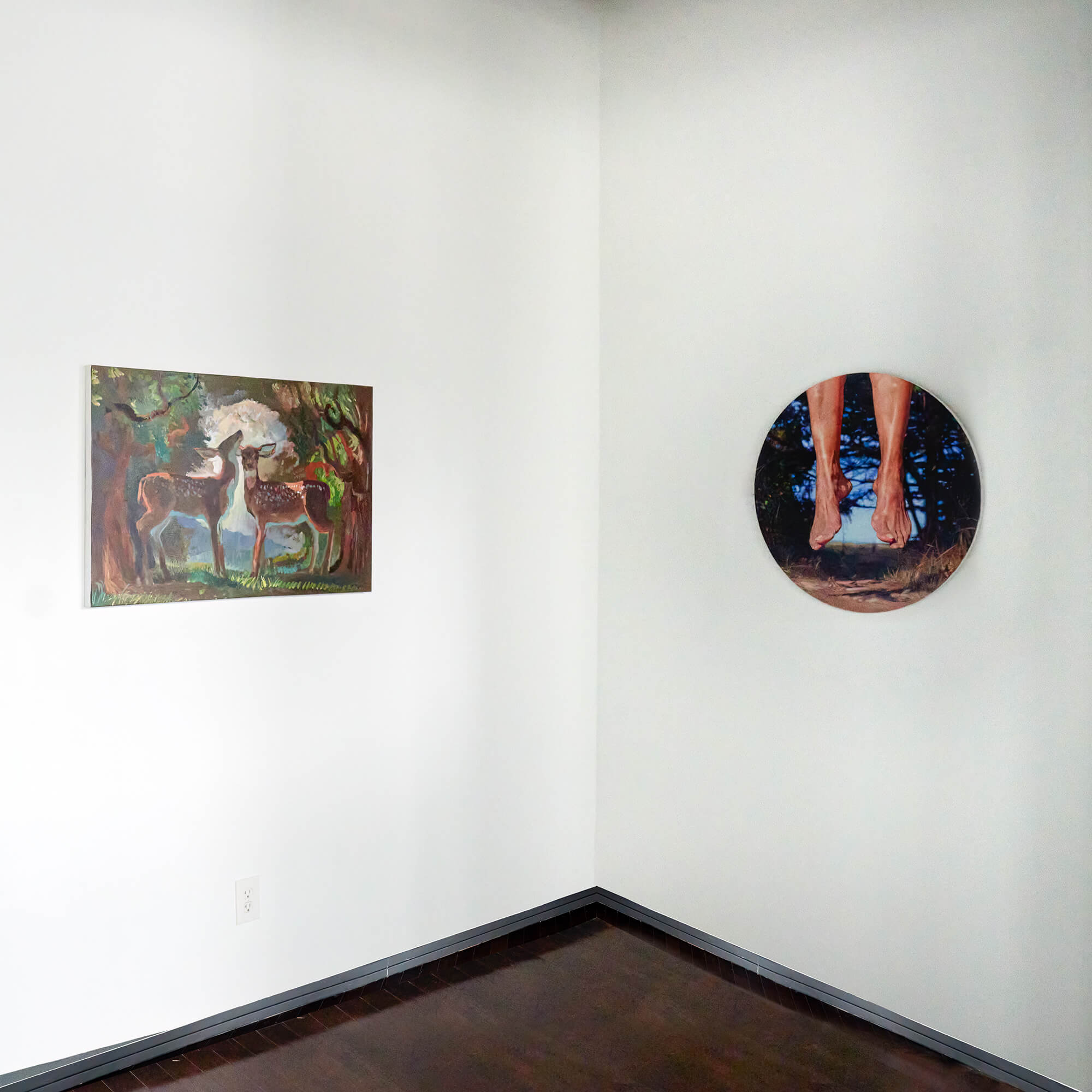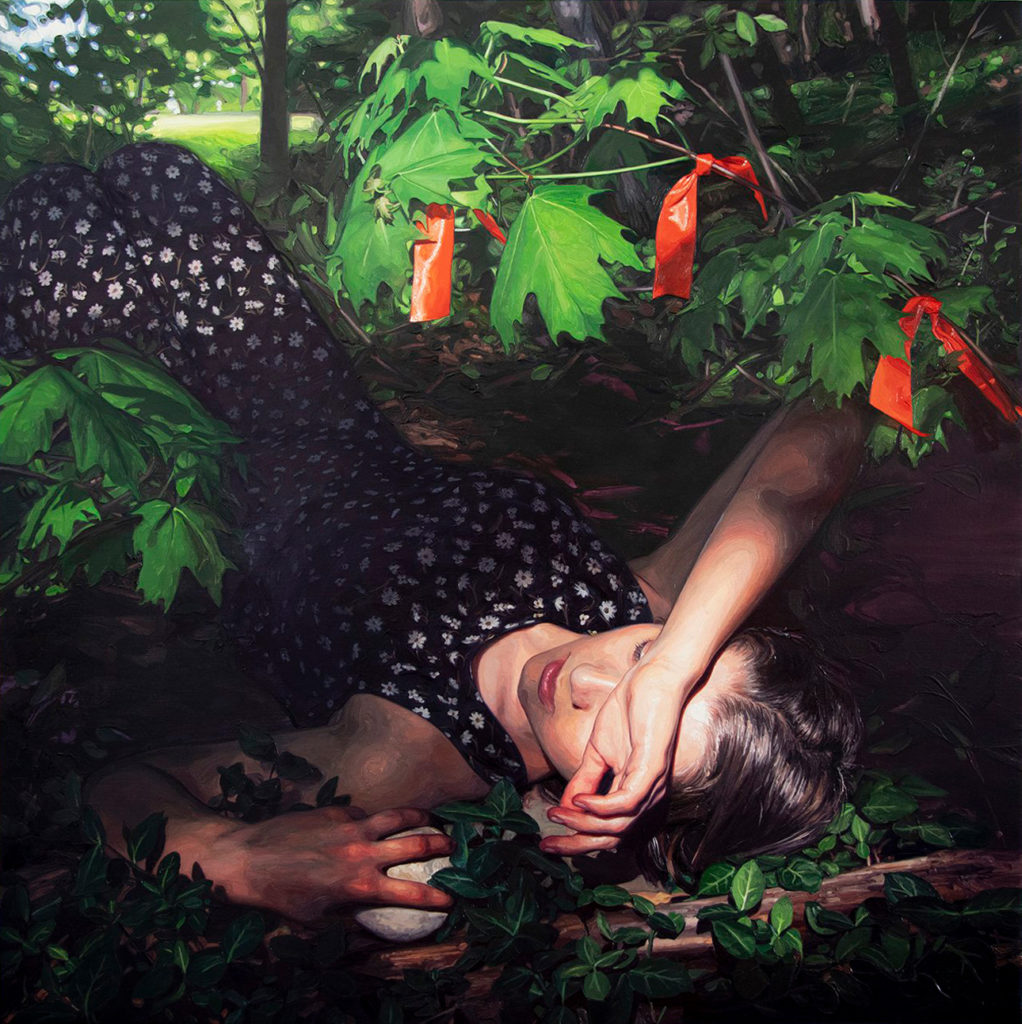
November 10 – December 6, 2022
To Die For
Curated by Laura Sanders
Contemporary Art Matters is pleased to present To Die For, a group exhibition curated by Laura Sanders. The exhibition is on view from November 10 to December 6, 2022, and features the work of Deborah Brown, Johnny DeFeo, Sophia Heymans, Christina Nicodema, Laura Sanders and Aaron Zulpo.
In the exhibition
Installation views
Contemporary Art Matters is pleased to present To Die For, a group exhibition curated by Laura Sanders. The exhibition is on view from November 10 to December 6, 2022, and features the work of Deborah Brown, Johnny DeFeo, Sophia Heymans, Christina Nicodema, Laura Sanders and Aaron Zulpo.
To Die For is an exhibition that explores desire, particularly the inexplicable desire to paint. Artists have long been drawn to subjects that reveal life’s dichotomies and match their technical approach to heighten the tension. The application and handling of the paint can imbue a work with opposing qualities, blending beauty with peril, metaphorically mirroring life experiences. Painting is pure alchemy and the drive to paint is an urge as mysterious and ancient as it is magical. This show brings together a group of artists whose work revels in the materiality of the medium itself, using it to infuse their imagery with meaning and potency. Sumptuous paintings traverse the genres of landscape, figurative and still life. To Die For conjoins human desire and the endangered environment from which it is derived.
In a world of magnifying natural disasters and threatened ecosystems, pursuing desire raises uneasy questions. This group of artists’ prescience is evident in the very subjects that they obsessively chase. They shine a light on significant social and environmental
impending disasters and cultural norms that threaten our way of life. They draw us in with luscious paint and poignant subjects that have an undercurrent of nature’s fragility.
As a figure of speech, To Die For is filled with drama, and at no place in this show is it more prominent than in Christina Nicodema’s paintings Dope and Nice. Rich impasto brushstrokes and oil paint that looks like it was squeezed from a pastry piping tip form the radial designs of mold devouring a once luscious fruit. Revealed are the passions of the insects and microbiota feasting on our excess and serving us with an unexpected visual banquet. Blooming with saturated hues, a descriptive penicillin green, ruby-red pomegranate, and lemon yellow, along with colors belonging to the heightened palettes of Instagram photo filters, provide pure viewing pleasure. In Nicodema’s hands, the opulence of the paint creates a land of plenty for the invertebrates who overrun this garden of leftover delights. In her paintings, we see that our waste, when abandoned, may still revert to a natural cycle, despite being manipulated and interrupted by human systems.
History provides the dramatic backdrop for the painting Dawn with Waxing Crescent, July 16, 1965 by Johnny DeFeo. Continuing his interest in landscape and memory, DeFeo has created an idyllic scene of flora and fauna. The shape of two fawns forms a bridge across the central portion of the painting, meeting with just enough space between them to create tension. From this space, billows of white illuminated clouds part the composition of the forest scene from the inside out. Though it appears bucolic, it is haunted by the 1965 Trinity atomic bomb test in Alamogordo, New Mexico. The title’s date and the moon phase illustrated in the painting signify the moment in time.Several years ago, while camping near Alamogordo and experiencing the vibrancy of the landscape, DeFeo was inspired to reimagine the event. Not as a black-and-white historical record but in the living color of the current moment.
Similarly, in my painting Flying Woman, the specter of history influences its interpretation. It depicts a partial view of the figure, her feet hovering above the ground on an earth-shaped linen support. If one does not have the context of the title, it is unclear that she is flying. Disturbing historical events can determine how we see the image now. Likewise, the title for my work Sleeping in the Forest provides additional insight. It takes its name from a famous poem by Mary Oliver. The painting is my reaction to her work. The desire I have to experience the transcendence the poem expresses meets the fear and anger of the reality I am familiar with. Equal in importance is the handling of the paint, each brushstroke a world onto its own, revealing something about form or its absence. My work draws upon the long history of painting and contemporary issues that also carry an extensive legacy.
In Deborah Brown’s still life painting Ruth, the vibrantly colored paint generates an exuberance that is anything but still. Fluid linear brushstrokes create an active, emotionally charged subject. A collection of keepsakes becomes lively containers for the memories or mysteries of their former keepers. The intensity of Brown’s work is matched by her own personal energy. Visiting her expansive studio, paintings large and small-scale fill the space. During the recent pandemic, Brown focused on her immediate surroundings, creating still life paintings of treasured mementos. Her painting Icons displays an ordered composition of four loosely painted rectangular shapes evenly spaced within the work’s four corners. This arrangement would seem a meditative reflection of devotional objects if not for the animated action packed within. Historical figures come alive and seem to interact with each other from the confines of their tableau. Colors hum and passions emanate from the icons giving us glimpses of wings and halos, swords and horses.
Sophia Heymans’ painting Tidal Tears tips the horizon to the very upper edge of the work so that the viewer becomes either a bird or a drone surveying the tidal pools below. This dynamic shift in perspective echoes the deeply felt sentiments of the painting. A desire to belong to the natural world is just out of reach in our suspended view, intensifying the longing. Tidal flows push the rocks and sand, creating images of human profiles infusing the landscape with emotion. Heymans builds the surface of the painting into a relief using natural materials such as shells, rocks and sea moss mixed into the paint. This approach gives the eye a visual terrain to follow through the winding forms of the composition. In Heymans’ painting Braiding the Rain, she uses mop strings to lend weight to the vertical movement of the falling rain that doubles as strands of hair descending from the sky. As the waves cap, they form watery hands that reach out and fashion the rain into braids. The kinship between the rain and the body of water is beautifully expressed in this poetic use of imagery.
In contrast to Heymans’ aerial viewpoint, the horizon line in Aaron Zulpo’s paintings Joshua Tree by Barker Dam and Joshua Tree Maze Loop sits low, giving a dramatic presence to the trees the paintings focus on. Traveling to his subjects in national parks and wilderness areas, Zulpo works on location in plein-air. He explains that he treats the Joshua trees as if they were sitting for a portrait, and indeed he has imbued them with a physical character that feels humanly relatable. In each painting, the majestic but quirky tree towers over the landscape, dwarfing the distant mountains and casting long shadows. The endurance of these slow-growing centenarians is celebrated, but concerning to our current generation is their vulnerability to the changing climate. With short staccato brushstrokes and undulating lines, Zulpo, aware of the fragility of our moment, creates an expressive memento of the contemporary landscape. Widening his pursuit of outdoor painting, Zulpo cofounded Adventure Painting, a traveling artist residency, alongside painter and friend Johnny DeFeo.Since 2018 the two artists have led expeditions to some of America’s most stunning scenery with the goal to expand the visual lexicon of landscape painting.
This exhibition came about partly because of a project I began in the spring of 2021. In the unlikely time of a worldwide pandemic, several artists and myself, mainly from the midwest but also from as far away as California, formed a studio collective in Long Island City, New York. This has been a great experience. Having the opportunity to meet other artists, visit their studios and share my work with a wider arts community has been so rewarding. As a result, I connected with the artists in this show, even spending time painting with artists Sophia Heymans, Aaron Zulpo and Johnny DeFeo as part of an Adventure Painters Armory Show off-site project in 2021. I am grateful to be in the
company of these dynamic painters and proud to present works I feel are To Die For.
By Laura Sanders
